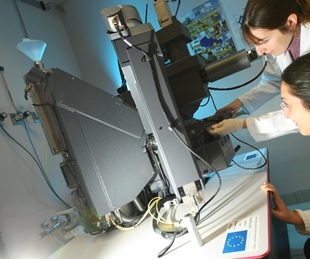Electron probe micro-analyzer CAMECA SX 100
The electron probe micro-analyzer (EPMA) CAMECA SX100 is a unique microanalytical technique in the North of France, it allows the detection of all the chemical elements from Beryllium up to Uranium, in a wide range of materials (glass, metals, polymers, ceramics, minerals…).
This high level technical device is localized at the Ecole Nationale de Chimie de Lille (ENSCL), on the Lille University campus, it is a historical device in this engineer school since it is the third generation of EPMA at ENSCL since 1966.
Its resolution and sensitivity makes it possible to determine and quantitatively modifications or alterations in a material at the micron scale (thickness, breakage, diffusion, corrosion, mixing…).
The EPMA technique is commonly used in various domains, such as metallurgy, glass, geology and surface treatment.
- Tungsten filament electron source.
- Acceleration voltage from 1kV to 30 kV.
- Regulated probe current.
- Secondary and backscattered electron detectors.
- Four WDS spectrometers equipped with PC1, PC2, PC3, LLiF, LPET and TAP crystals.


